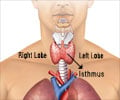The EU Commission jointly commissioned the two European authorities to prepare common guidelines as to how the hazard-based criteria can be implemented practically.

‘The BfR conducted literature research along with a survey among selected competent laboratories in order to compile information on the applicability and suitability of various methods of hormone measurements in experimental animal studies.’





The recommendations prepared as a result of the hearing are intended to be included as an annex to the guidelines for the health assessment of endocrine disruptors in line with the EFSA mandate. These European guidelines are currently being prepared jointly by EFSA and the European Chemicals Agency (ECHA). The results of the hearing are to be published in a scientific journal. In July 2017, the European Commission reached an agreement with the EU member states on the criteria by which endocrine disruptors should be identified in future in the field of plant protection products and biocidal products. The EU Commission jointly commissioned the two European authorities ECHA and EFSA to prepare common guidelines as to how these hazard-based criteria can be implemented practically in the context of Regulations (EC) No. 1107/2009 and (EU) No. 528/2012.
On behalf of EFSA, the BfR conducted literature research along with a survey among selected competent laboratories in order to compile information on the applicability and suitability of various methods of hormone measurements in experimental animal studies, which have to be conducted for the approval applications. This information was then discussed with the experts at the above-mentioned hearing before recommendations were prepared.
For pesticidal active substances and other chemicals harmonised scientific criteria are required for the identification of hormone-damaging substances. The BfR already published a consensus paper on this in 2016 as the scientific basis for the subsequent work of the EU authorities. On a legislative level, EU regulations are currently being established which are to be substantiated on a scientific level through guidelines for their harmonised regulatory implementation.
The EU Commission has jointly commissioned EFSA and ECHA with this task. The BfR provides support to the authorities with its scientific and technical expertise by providing the corresponding EFSA work group with personnel and conducting research and surveys on the practicability of examination methods. The publication of the EFSA/ECHA guidelines is expected in spring 2018. They are to be transferred into assessment and approval practice after the corresponding regulations have been adopted by the EU Parliament and Council.
Advertisement














